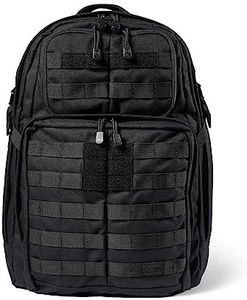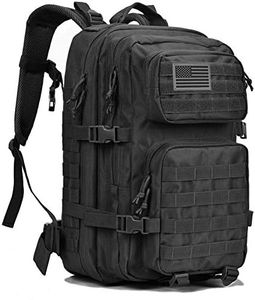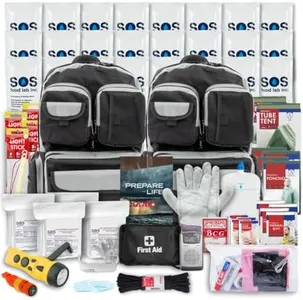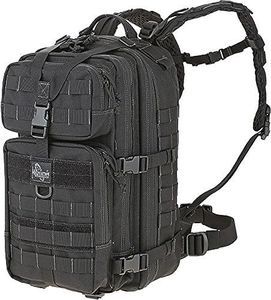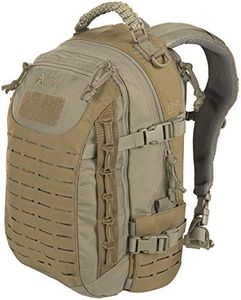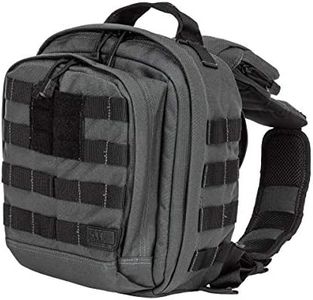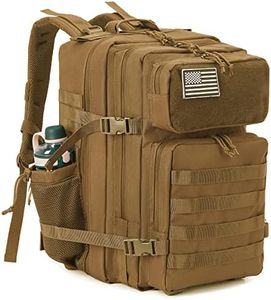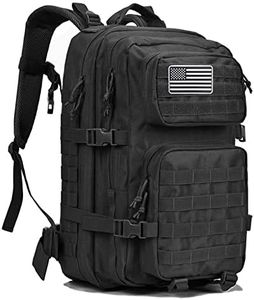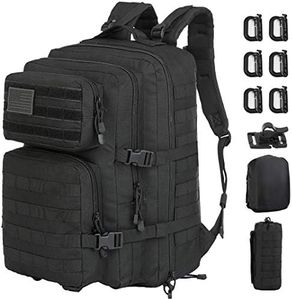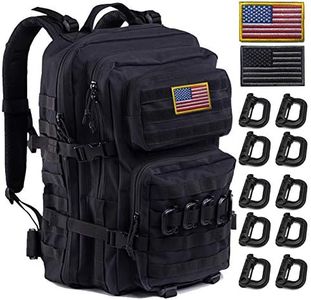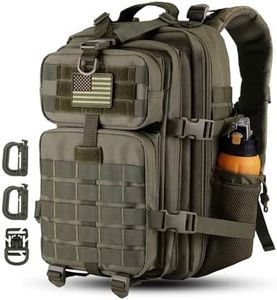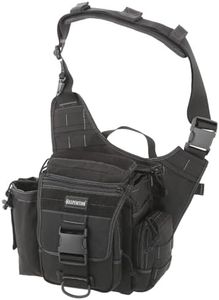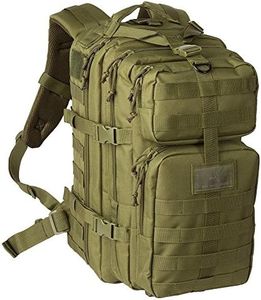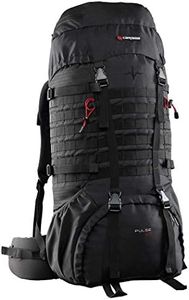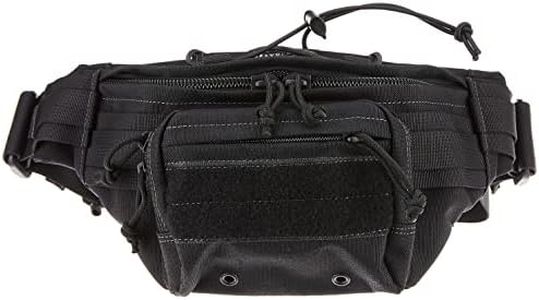We Use CookiesWe use cookies to enhance the security, performance,
functionality and for analytical and promotional activities. By continuing to browse this site you
are agreeing to our privacy policy
10 Best Bugout Bags
From leading brands and best sellers available on the web.Buying Guide for the Best Bugout Bags
Selecting the right bugout bag is crucial for anyone preparing for emergencies or outdoor survival situations. A bugout bag is essentially a ready-to-go backpack filled with all the essentials you might need to survive for at least 72 hours if you have to leave your home unexpectedly. The right bag doesn't just hold your gear—it needs to help you carry it comfortably and efficiently while withstanding rough conditions. Before choosing, think about how much gear you need to carry, how far you might need to travel on foot, and how harsh the environments might be. Your specific needs, body type, and the situations you are preparing for will guide your choice.CapacityCapacity refers to how much gear your bag can hold, usually measured in liters. Small capacities (20-35 liters) are suited for minimalists or quick getaways, carrying just the bare essentials. Medium capacities (35-50 liters) work for most people, fitting enough supplies for several days without being too bulky. Large capacities (50+ liters) are best for those who need to pack extra, like families or special medical gear, but can become heavy and harder to carry. Choose a capacity based on how many people you’re packing for, the length of time you need to be self-sufficient, and your own strength and size.
Material and DurabilityThe material of a bugout bag affects how well it stands up to the outdoors and the weight you carry. Common materials include polyester, nylon, and sometimes canvas, each varying in thickness and water resistance. Lighter materials are easier to carry but might rip or wear out quicker, while heavier-duty materials add weight but last longer and protect your gear better. If you expect tough conditions or rough handling, prioritize durability and water resistance; for lighter travel, you might opt for lighter materials.
Compartments and OrganizationHow a bag is organized inside can make a huge difference when you’re on the move. Bags with multiple compartments help you sort gear for easy access—think of places for water, food, clothing, and tools, each separated. Some bags have dedicated pockets for hydration bladders, first aid, or electronics, while others are more basic with one main area. If you like structure and quick access to specific items, look for more organizational options. If you prefer to use your own pouches or don’t carry small items, a simpler layout may work.
Comfort and Carry SystemThis refers to how the bag fits your body and helps distribute weight. Key features include padded shoulder straps, hip belts, and ergonomic back panels. Small bags may only need basic straps, but larger ones require comfortable, adjustable systems to keep the weight off your shoulders and onto your hips. If you expect to walk long distances or carry heavy loads, spend extra attention on comfort and adjustability to avoid injury and fatigue.
WeightThe empty weight of the bag matters, especially once you start loading it with supplies. Lighter bags make walking easier, but sometimes at the expense of toughness or extra organizational features. Think about how much you can reasonably carry for several kilometers—avoid starting with a bag that's heavy before you've packed anything in it.
Water ResistanceWater resistance protects your gear from rain or accidental splashes. Some bags are made from water-resistant or even waterproof materials, include rain covers, or have sealed zippers. If you live in a wet climate or anticipate harsh weather, this feature becomes critical to keep your essentials dry. In drier regions, it’s still wise to have at least basic water resistance or an easy way to add a rain cover.
